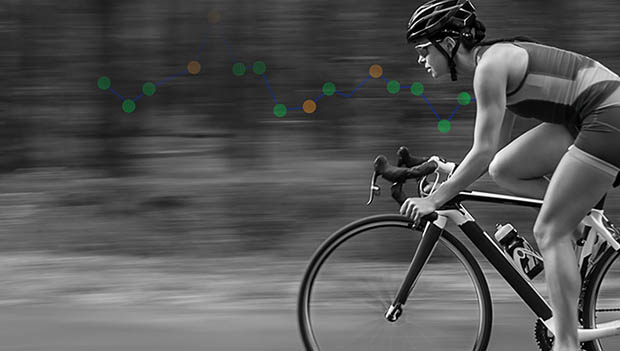
Originally used in critical monitoring situations in hospitals and aerospace, heart rate variability (HRV) analysis is a sensitive measure, and when used with care can provide valuable insights on how well your body is coping with training and adaptation. It has now become popular amongst athletes thanks to the availability of easy to use apps and accurate sensors.
However, HRV products can appear deceptively simple, and you do need to take care when both measuring and interpreting HRV to get the most out of it. In this article, we will list some of the common misconceptions about training with HRV, and how they can be avoided.
To learn more insights, take my online course, “Introduction to Heart Rate Variability.”
Cycling Events Near You
1. HRV doesn’t tell me any more than my resting heart rate (HR).
Although an elevated resting HR has been used as an indicator of pending overtraining, it is a blunt instrument, and by the time it is elevated the damage often has already been done. This is because resting HR combines influences from both the sympathetic and parasympathetic nervous system branches, as well as circulating hormones.
On the other hand, HRV provides a direct measure of the parasympathetic branch, often referred to as the “rest and digest” branch. That makes it a much more sensitive stress and recovery indicator than resting HR. With HRV, you get a much earlier warning.
2. Daily changes in HRV reflect the previous day’s training load.
A hard session will affect your HRV, but things are rarely that simple, and if they were you wouldn’t need HRV. More useful is how trends in HRV reflect the accumulation of Total Load over a period of a week. Total Load is the sum of mental, nutritional and physical stresses on the body. Research has shown that the lower the other sources of stress, the harder you can train.
3. Readings should be taken whilst lying down.
We believe that you should measure with the body upright, either sitting or standing if you have a very low resting heart rate. This helps avoid a phenomenon called parasympathetic saturation when lying down which makes trends in HRV more difficult to interpret.
You should also remember good posture and breathing have a significant impact on your HRV, good apps will guide you in keeping breathing consistent during measurements.
4. HRV measurements should be at least five minutes long.
This is a misconception I had to overcome with many people when I created ithlete in 2009. Having a background in signal processing, I spent many months looking at different HRV measures before settling on RMSSD as one that could produce good quality readings for convenient daily use in less than 60 seconds. This has subsequently been adopted by most HRV tools on the market. We additionally use paced breathing to improve the day-to-day stability of the measure. The convenient one-minute measure has since been independently validated too.
5. It is better to take an HRV reading at any time of day than no reading.
Waking is the best time to take the reading, but the cortisol awakening response means the reading will be different to other times of day. If you cannot take a reading within a one hour window of your usual time then don’t bother for that day as it will not be representative of your waking state and may also distort your baseline.


